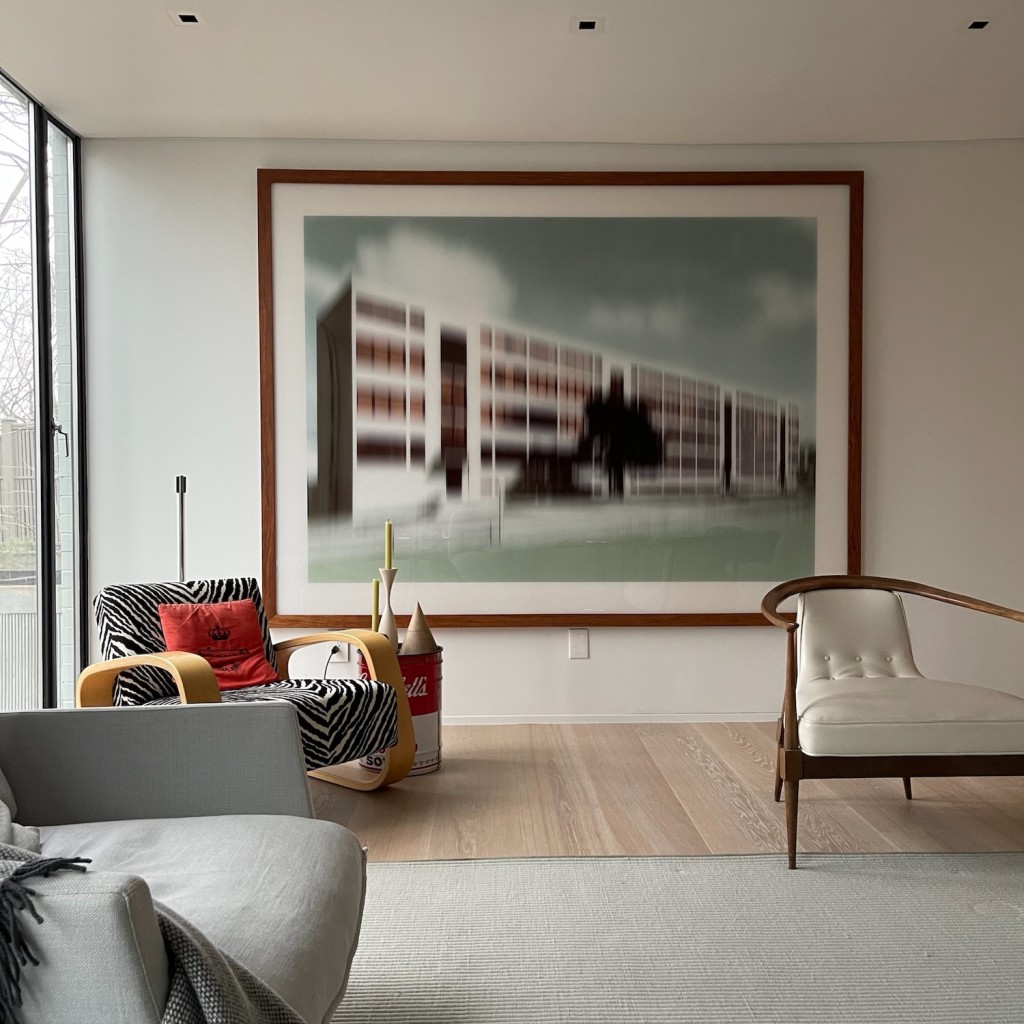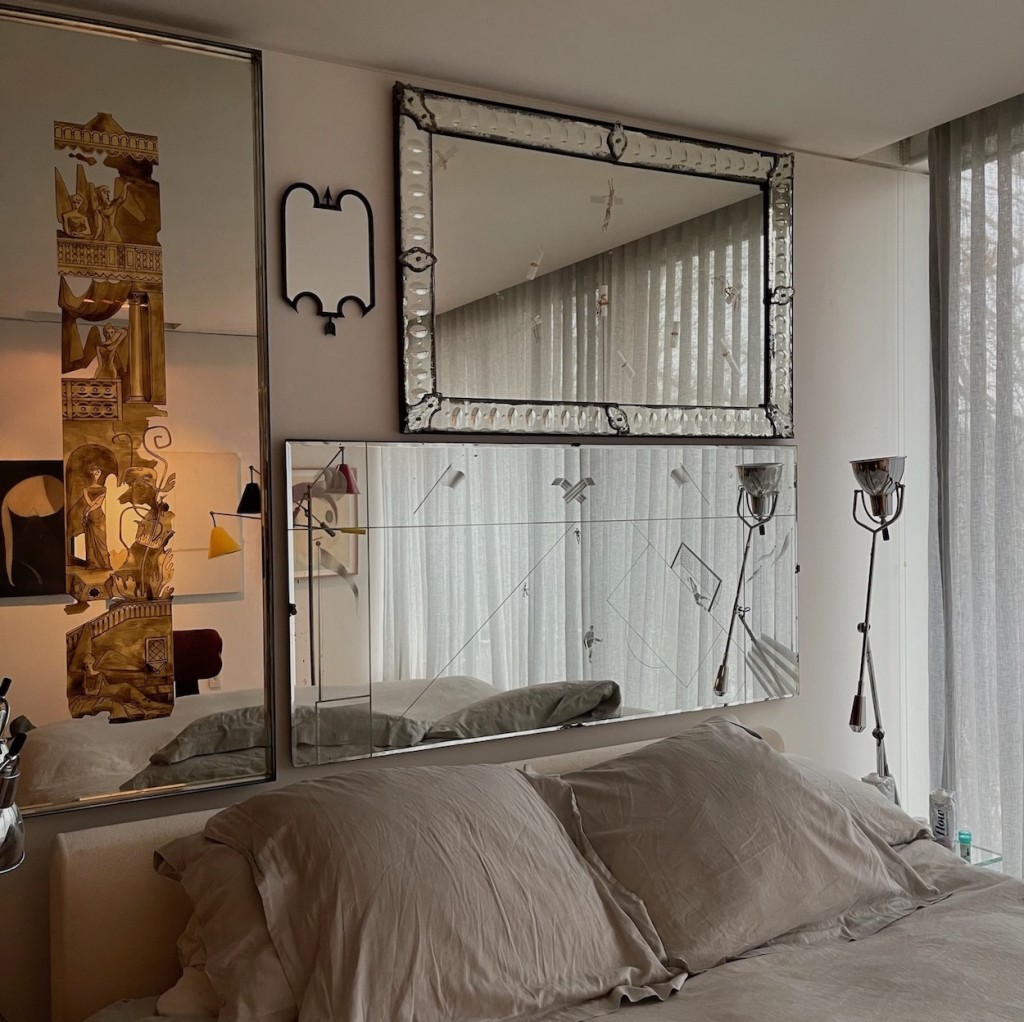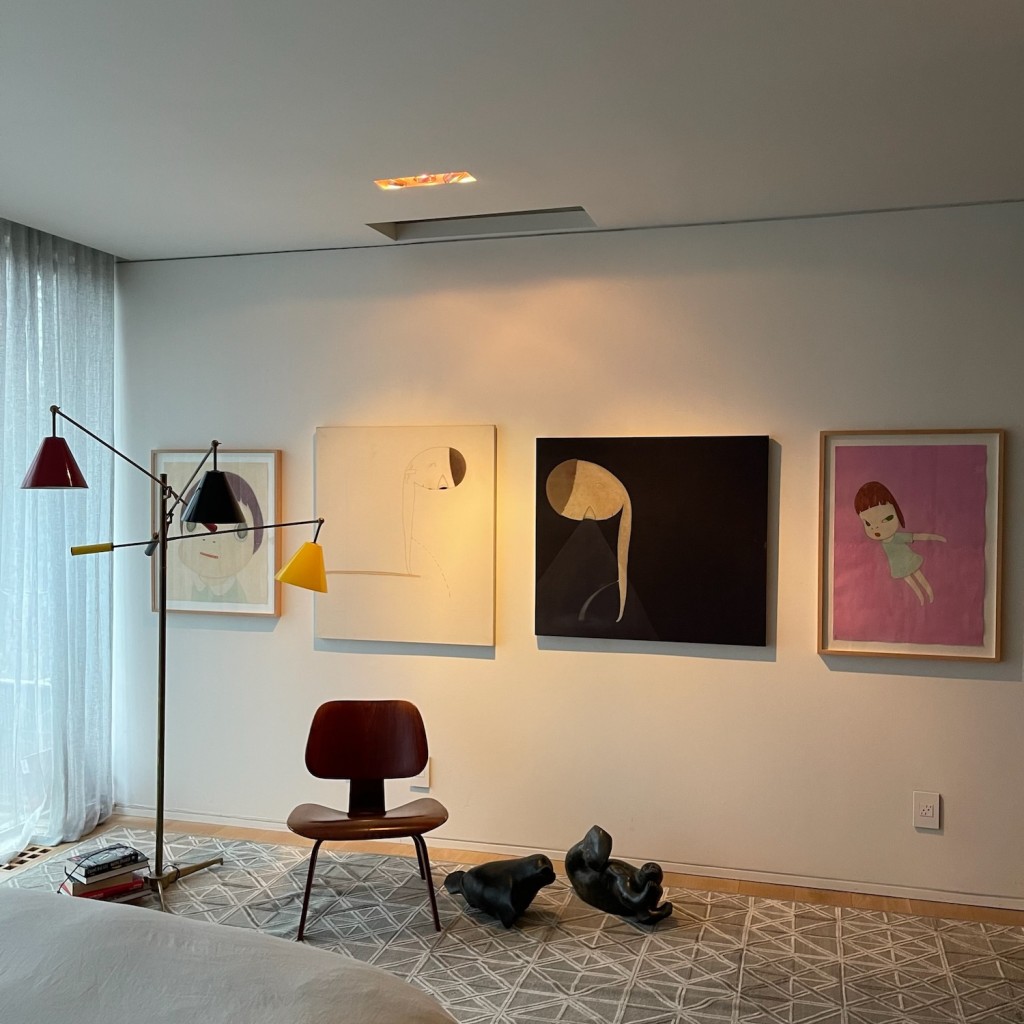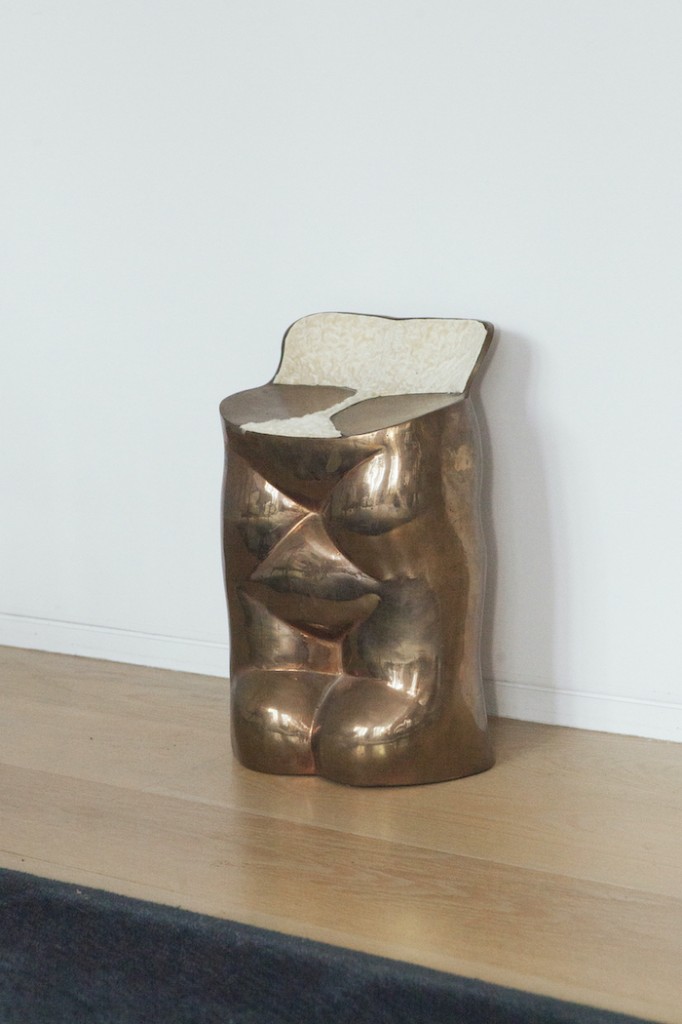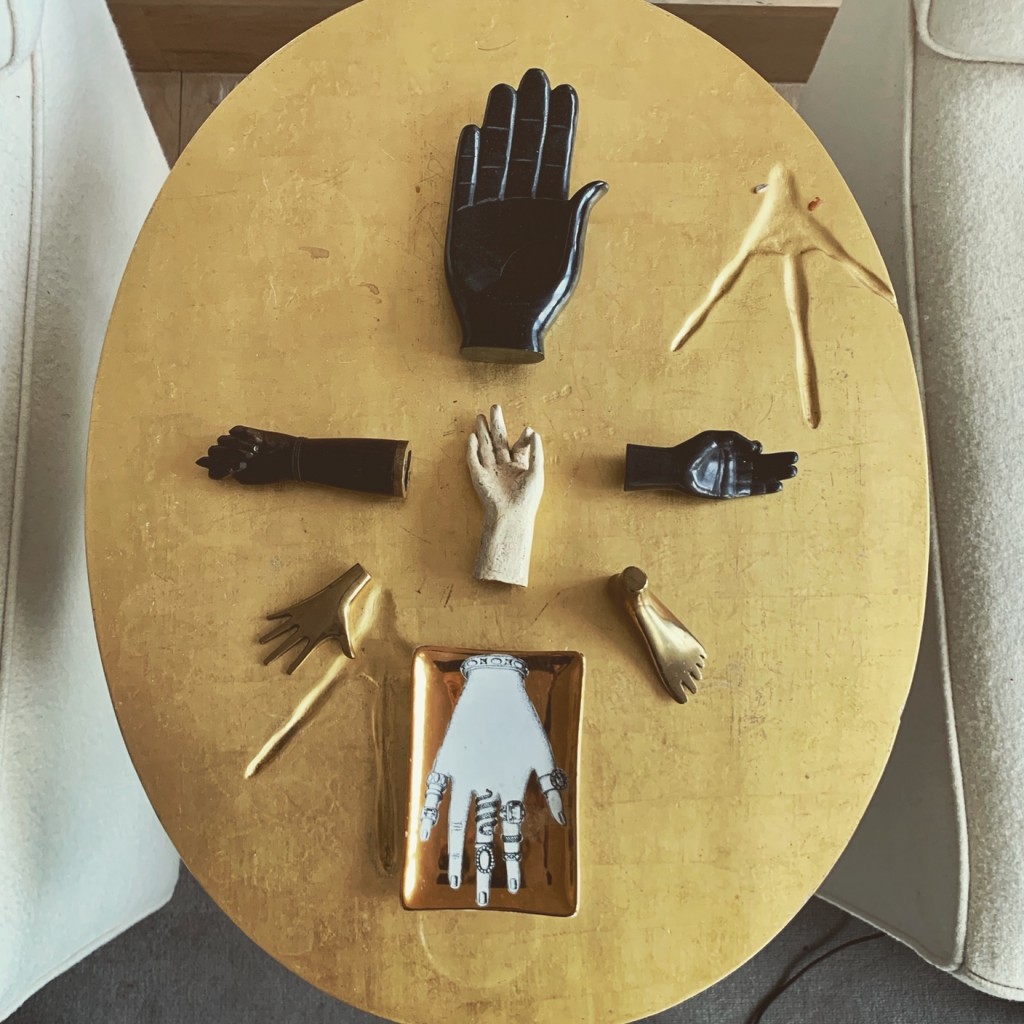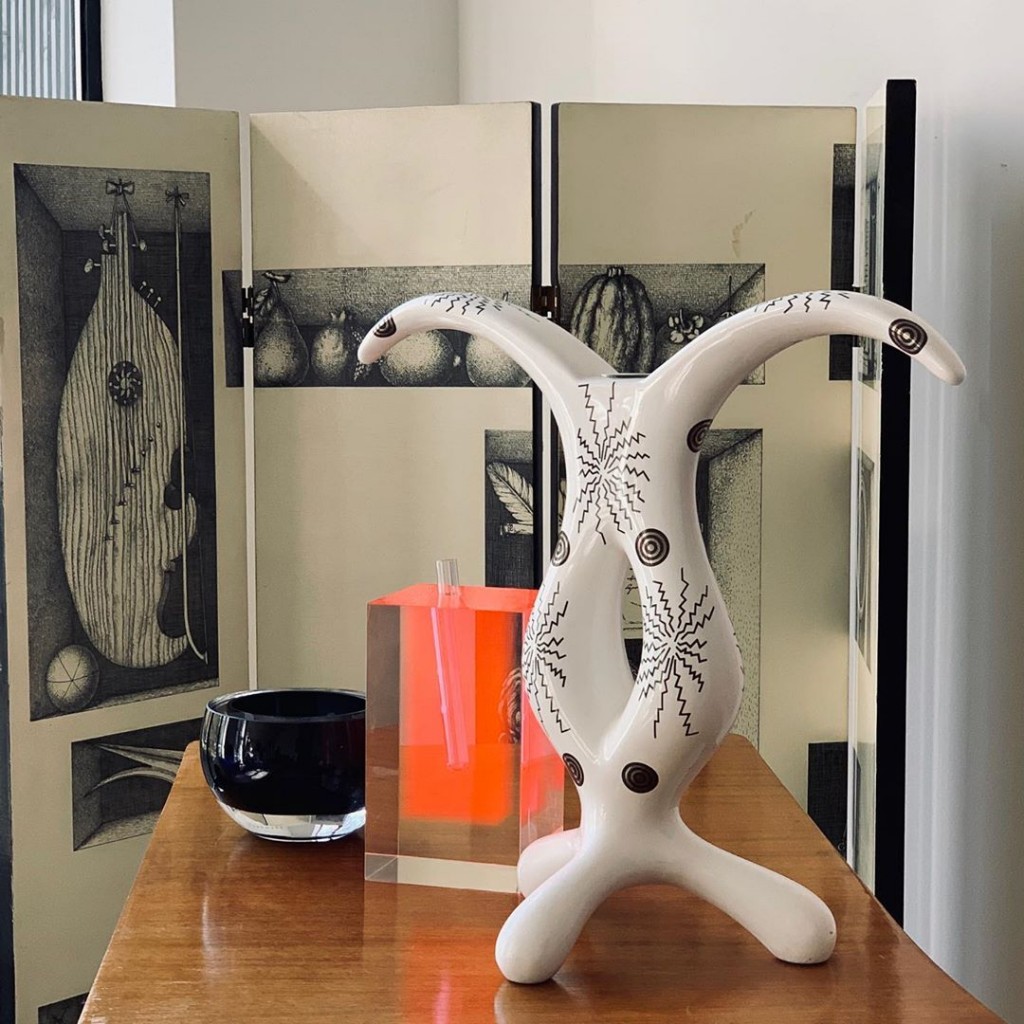Having been partners in life and business for over four decades, George Yabu and Glenn Pushelberg are a renowned designer duo favored by high-end fashion brands and heads of state alike. Their past projects include New York’s Bergdorf Goodman, Hong Kong’s Lane Crawford, Paris’ Printemps, a number of salons for Louis Vuitton stores located across the globe, as well as locations for Carolina Herrera and David Yurman. More than that, they also collect contemporary art together, building a collection that reflects their evolving personalities and tastes, including work by Wolfgang Tillmans, Yayoi Kusama, Julian Opie, and Anish Kapoor among others.
LARRY’S LIST chatted with the duo who emphasised on the importance of personal connection to the artworks they collect. They also shared about the story of the complicated installation of a Kusama Pumpkin, the hilarious experience of commissioning a portrait of George from Julian Opie, and the similarity they perceive between art and design.
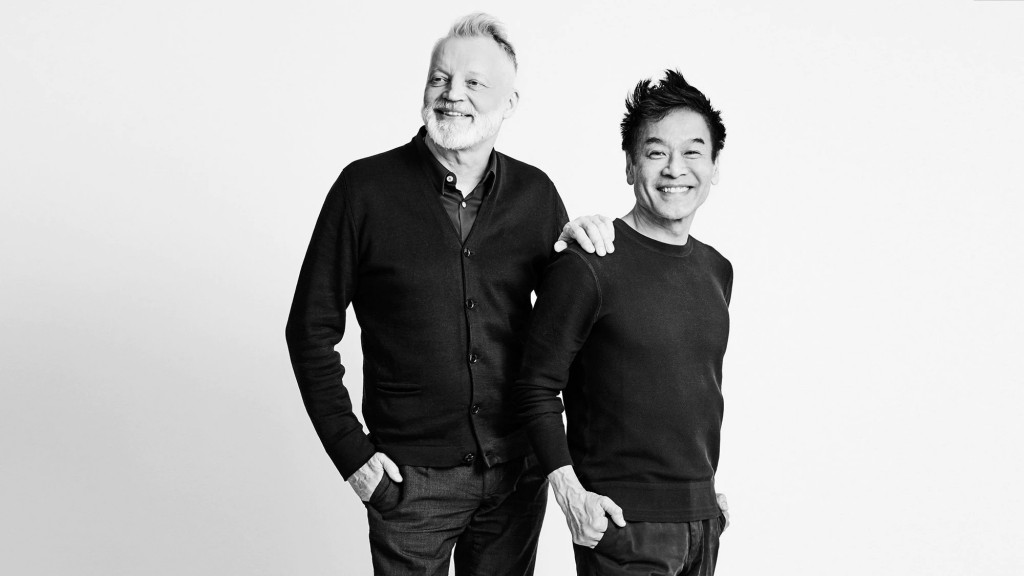
Collecting
What made you want to start collecting art? What is the main motivation behind your collecting?
Curiosity. We met a contemporary collector in Toronto who taught us about Canadian artists, and that began our journey. We still gravitate to art and artists that remind us of parts of our history, and who have a sense of wit or irony. There were artists that we admired when we were younger that at some point we have been able to collect. For example, Robert Mapplethorpe and Diane Arbus really began to gain momentum when we were growing up. Or Anish Kapoor and Marcel Dzama—we always admired their work and were thrilled when we began to collect it. Some Japanese and Chinese artists we met through our travels remind us of our trips and adventures. That kind of long-term relationship creates a deeper, more personal connection to the work.
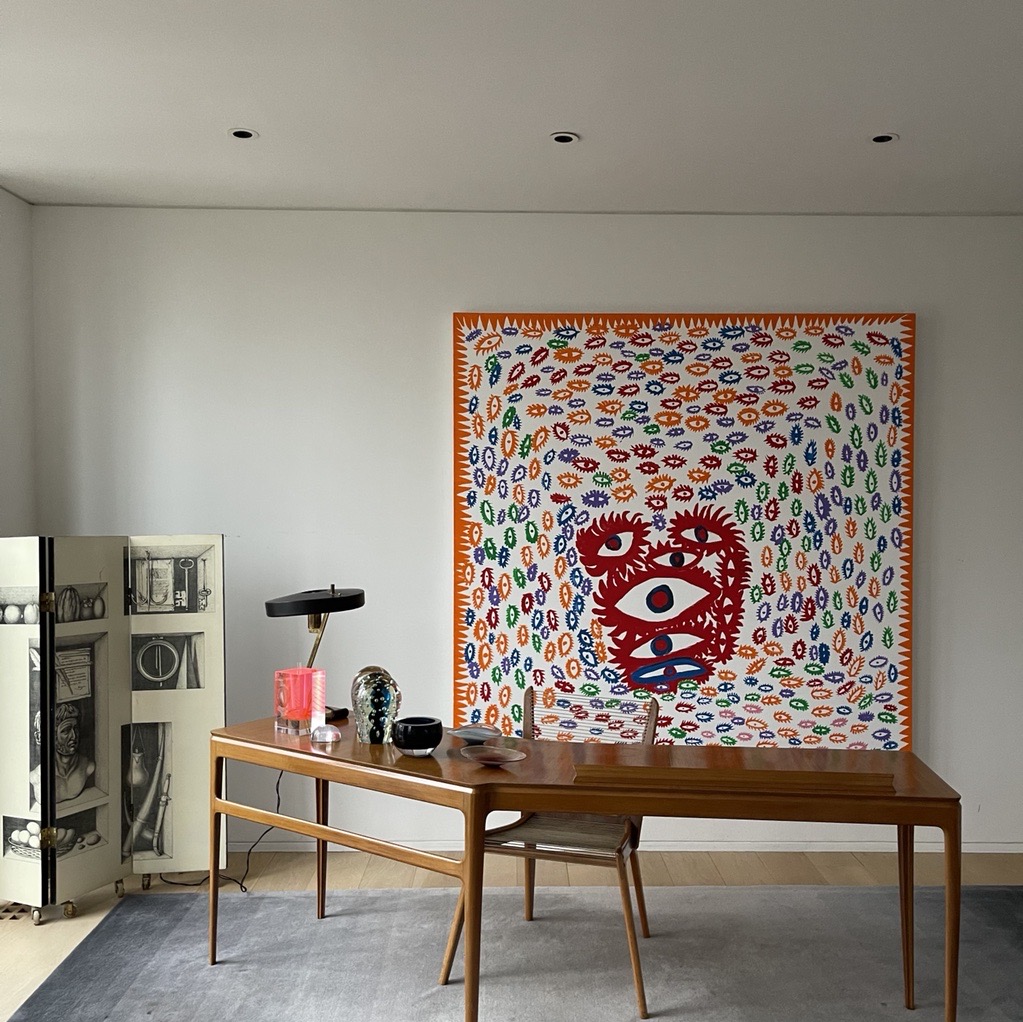
What is your focus regarding the artists in your collection? Are you more interested in emerging or renowned artists?
To us, collecting art is very personal. It’s not about investing or a strategy around a bound collection—it’s just artists that we love. Recently, we bought a piece from AA Bronson, who is part of the three-person collective General Idea. In school, we always wanted a piece of their work. But we are drawn to new and emerging artists equally. Last year, we were introduced to the work of an emerging Indigenous Canadian artist, Ooloosie Saila; we bought her work because we thought it was beautiful and poetic.
Is there any particular type of art that has consistently attracted you, or anything that unites all the works you have acquired?
What grabs our attention in the moment. Artists from our memories. It’s not so much about unity as it is about life interests—our evolving personalities and tastes are the through-line of the collection.
We were at the Teplon gallery in Paris buying another work and saw a Gregory Crewdson—we became fascinated by his photography. It’s a bit of happenstance, a collection curated by our emotional reactions to the art.
What were the first and the latest artworks you purchased?
Early on, we purchased a lot of work from Canadian artist John Massey, about a dozen pieces. At that time, Massey was doing something similar to German photographer Thomas Demand, making constructions then photographing them.
We have purchased photographs by Wolfgang Tillmans from David Zwirner for some time. We looked at the collection before the holidays, and were asked to donate to a museum, which we can share more on soon.
How many artworks do you own? Where do you display your collection?
There are probably 200-300 pieces in our homes and offices. We put them in the places we live and occupy often. We like them in our office spaces especially because it makes them easier to share with people.
Would you wish to present your art collection publicly?
We love to share art so this is definitely something to consider. We’re starting to donate–the Tillmans piece was our second donation, and the first was one of our commissioned portraitures of George from Julian Opie. It’s a good idea—converting our collection into more of a galley or foundation. One way of thinking about art now is facilitating accessibility around art.
What is special in your home designed to accommodate your collection? Any advice to other collectors?
We seek to create distinct moments for art in an environment, which requires thoughtful consideration of space. Once, George attended a sit-down dinner to honor Yayoi Kusama…
George Yabu (GY): I met her and we had a connection. We bought a painting the next day, and then we asked her for the pumpkin. It took her 6 months to decide that yes, she’d create one for us, and it was one of her last personal commissions.
A Kusama needs a lot of space volumetrically. We thought it was perfect for our property on Perry Street because of the space there, but we got a call from the doorman explaining that they couldn’t fit the pumpkin into the elevator. We left it outside and had to think fast, making calls and researching companies to sort out what to do. We thought about taking out the windows and getting a crane to lift the pumpkin into the space, but we were responsible for sealing the windows. It would have been $60,000 for the crane and permit, so we sent the pumpkin to Yabu Pushelberg Toronto studio. Of course, it couldn’t fit through the door there either, and had to go in laneway and through double doors. Four men carried it over the boardroom table. It was a long process to get it there, but ultimately our Toronto studio is a much bigger space than our home. We thought about it afterwards and it would have been too imposing in a room with 9-foot ceilings; it would be too “in your face.” 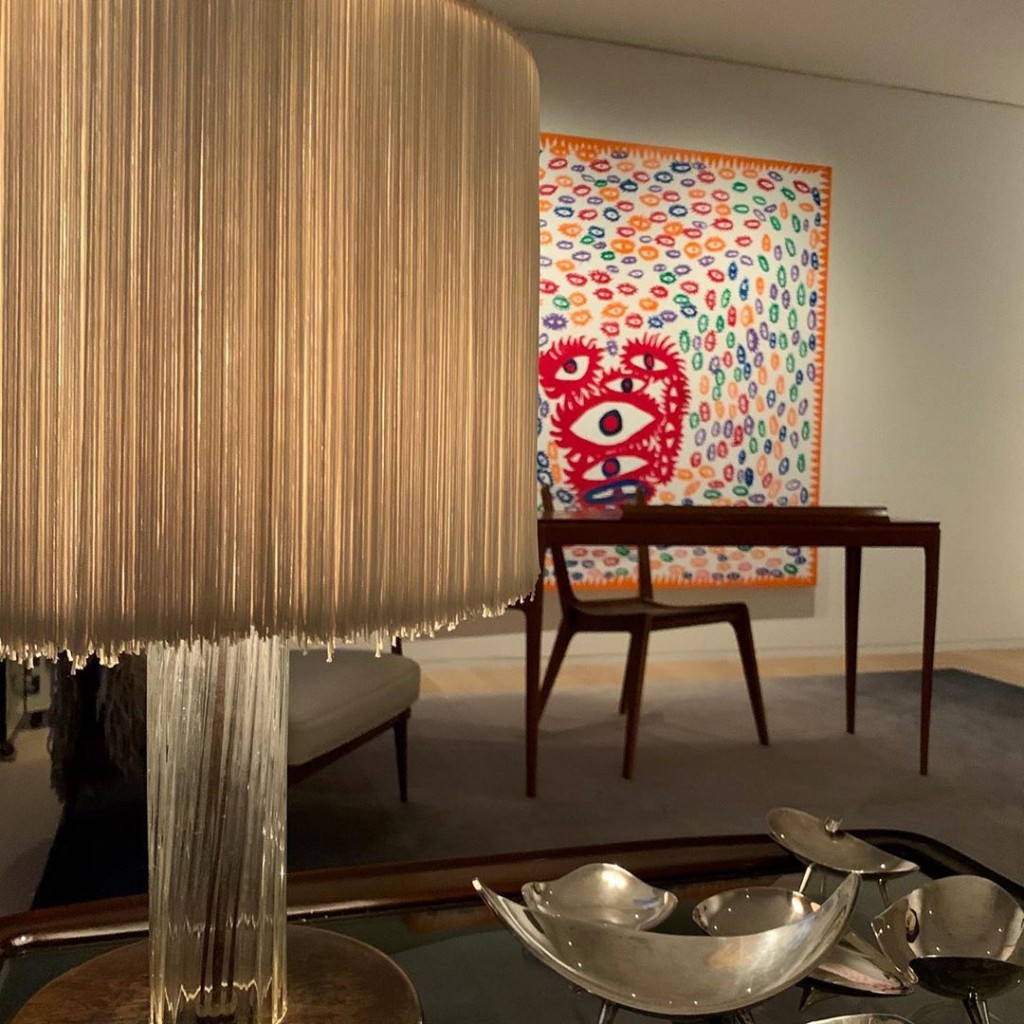
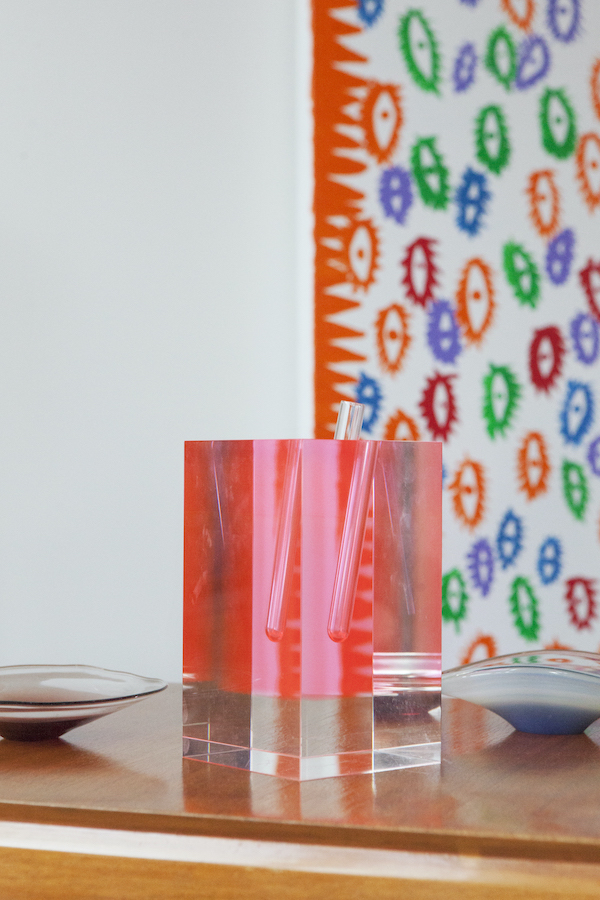
What considerations guide you to make a purchase?
The essential motivation is personal connection to the artwork. Does it evoke a memory, feeling, or experience that captures our attention and imaginations, or that we want to share with others?
What is your most treasured artwork?
We don’t want to covet anything specific, so it’s more about the moments that you discover. The immediate joy or frisson when you come across something that’s not necessarily ephemeral but that resonates in a particular way at a particular time. Our relationship to different works of art can change over time—we treasure each piece individually, but we don’t want to be stuck to it or a particular experience of it.
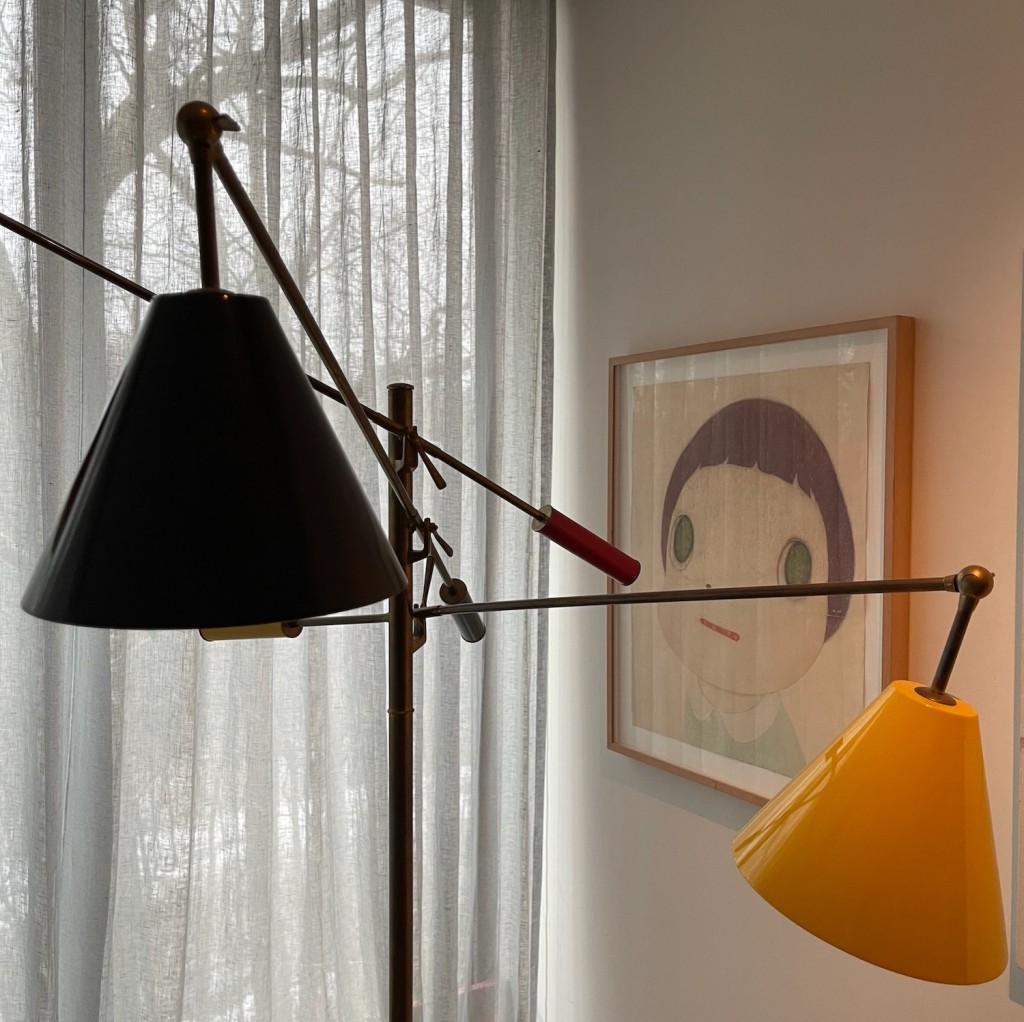
How important is it for you to meet the artists who created the artwork?
Glenn Pushelberg (GP): It’s not the most important thing, but it does impact our relationship to the art. If you can, it’s great to have more context and personal memory when you see the piece. The great Kusama story—there’s something heartfelt about it, and so the connectivity is better. There are other ways to find that connection, too. Collecting Mapplethorpe’s got us into reading his and Patti Smith’s biographies.
GY: It’s about connection, whether real, or perceived, or imaginary.
When collecting as a couple, do you always agree or have you ever argued related to art?
GP: Not really. We generally agree.
GY: I think you need that, to build a collection together.
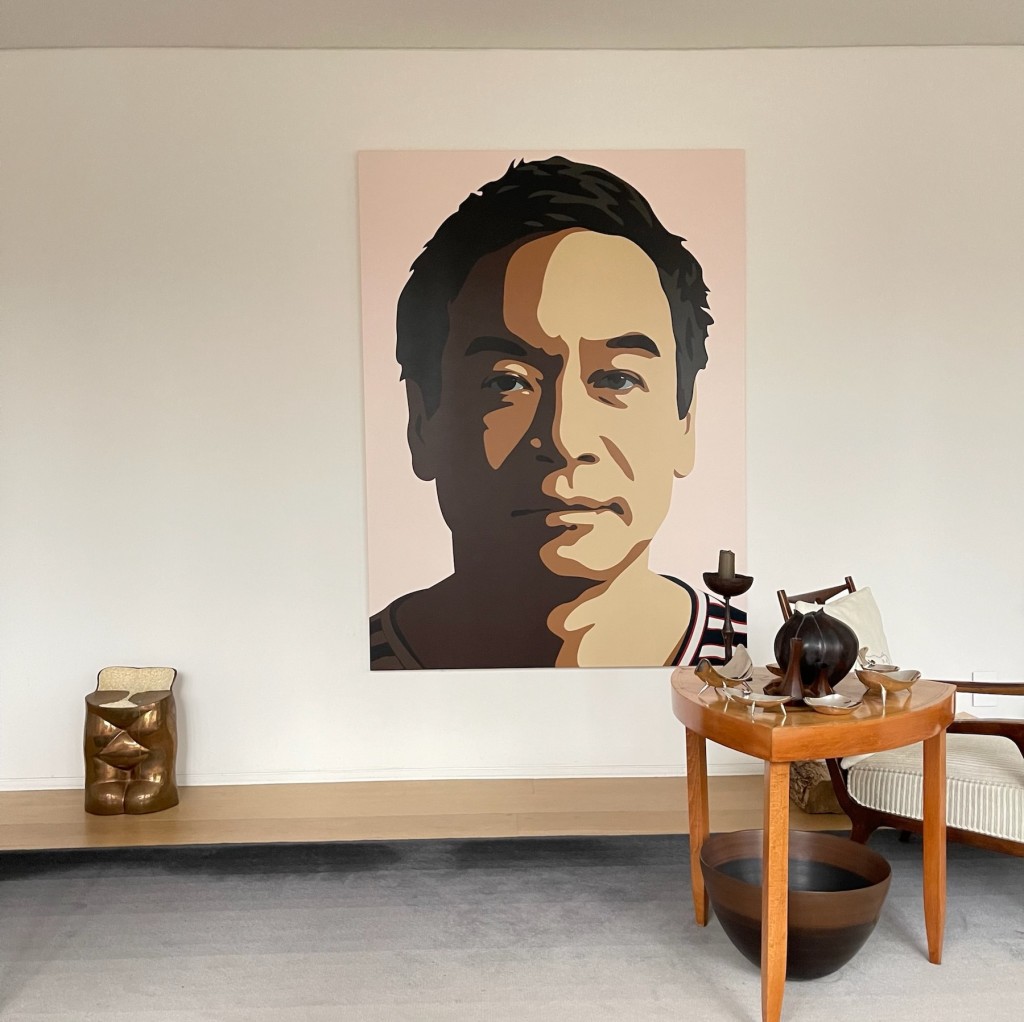
Glenn, how did the idea come by to have a portrait of George by Julian Opie for his birthday? George, how did you feel and how was the experience?
GP: For special birthdays, you want to do something special, and I had this notion of getting someone to paint George’s portrait. A good friend suggested Julian Opie, and we thought it was perfect. It was a great experience because you are at the will of the artist; you can’t dictate the picture, and he can do whatever art forms he wants. We commissioned 4 pieces. There were two portraits, one is displayed in our house and the other in a gallery in London. Then, there was a video piece and a bas relief, on display at the Art Gallery of Ontario.
GY: The process was terrifying initially because it’s like being at the end of the catwalk. You walk toward an army of photographers and people filming you, and you are performing not for Julian himself but for a whole roster of people documenting this. It was hilarious but fun, and I wasn’t mentally prepared for it. I should’ve gotten a facial and a haircut! Kidding—but it didn’t feel quite real in the moment. It was a great experience working with such a technical artist—kind of a mad genius—who was able to capture three dimensional video art on a flat painting. Brilliant. They spray-painted my hair white and made this track around my head to film it in 35 mm and create 3D imagery. A really interesting process and experience, like movie-making. Quite the afternoon! But not knowing how it would come out—that was the best part.
The Art World
Who inspires you most in the art world?
GP: That’s a good question. We’re inspired by different artists for different reasons. What comes to mind today is a super interesting Anish Kapoor installation we saw in Beijing, based on steam. It was beautiful and ethereal; when he gets into the less solid stuff, that was inspiring.
GY: I think we’re attracted to the combination of pure artistry and rigor in Anish’s work. You can see it in “The Bean” in Millennial Park (Cloud Gate, 2006), but also in one of the dishes that we have. What we saw in Beijing was more ephemeral and unexpected from him and his genre.
Why has art become important in your life? Is it a passion or an obsession or both?
GP: It’s a passion and an obsession.
GY: It is both. That said, some people make it their entire life to collect art and that’s not my thing. I like to experience it—touch and feel it—but I don’t feel like I need to own it necessarily.
GP: We like to share it.
GY: It moves me and takes me to places and evokes memories. If I’m not focusing on it constantly, it will do that unexpectedly and without a schedule. Like with Anish Kapoor—the first piece of his we bought, we saw at an art fair. It featured a Japanese lacquer technique that we connected to. On the last day, as they were packing up the booth we asked, “what do you want for this?”, offering to save them the trouble of recreating it or sending it back to the gallery.
GP: At that point in our life, we never really imagined we’d be able to spend the money to collect seriously, but we loved his work enough to push ourselves to do it.
GY: I remember they just left it in a crate in our lobby on the ground floor without a deposit, even. We hadn’t spent a nickel. I think somebody just signed for it downstairs.
GP: “I think that’s the Anish Kapoor in there!”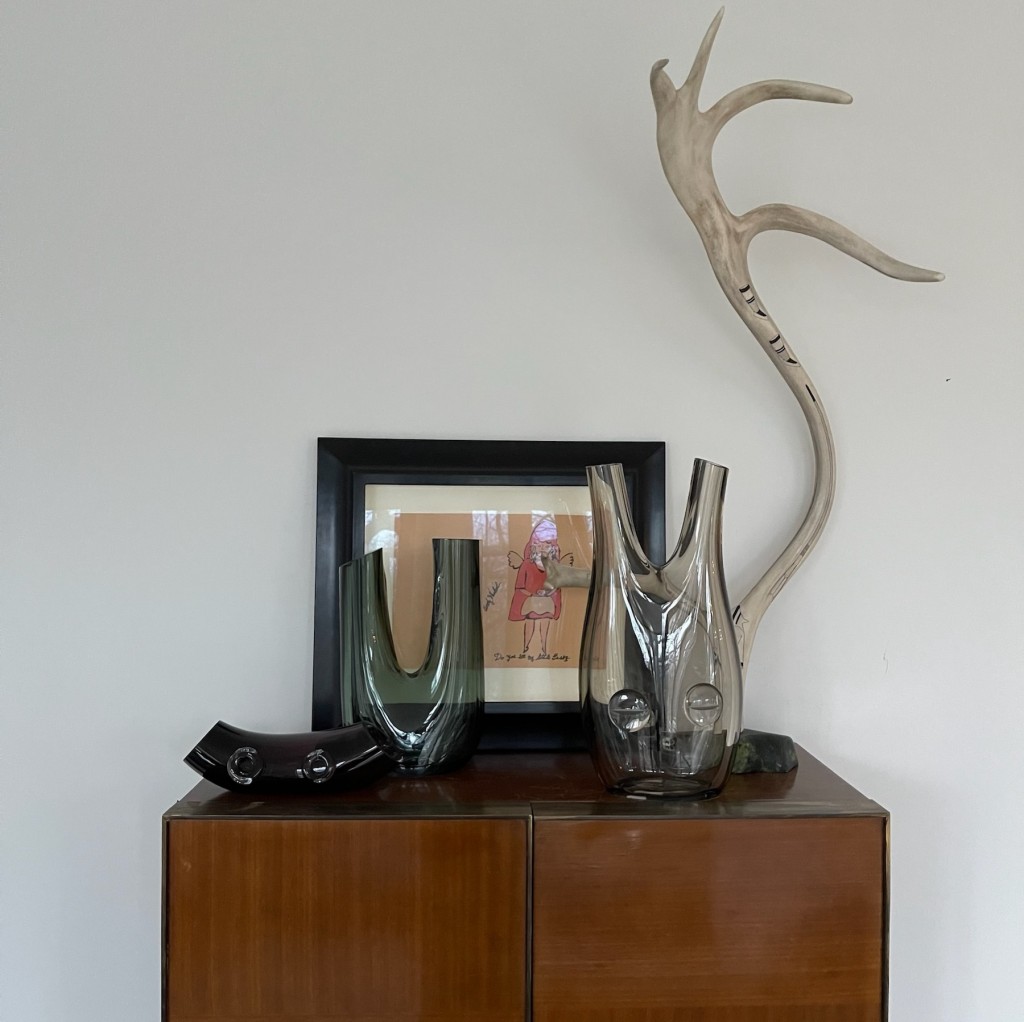
How does contemporary art influence your design? Any examples of art-inspired design?
GY: Art—and the mind of the artist—is a reflection of society and what’s going on. So it’s a vessel for the instrument to express the state of the world as they experience it and for understanding passion on a philosophical level. At the same time, there’s nothing wrong with getting joy out of something beautiful. We take the same approach to curating environments, casting ourselves as creative directors of experience and drawing inspiration from how people live today.
All images: courtesy of George Yabu and Glenn Pushelberg
Related: Yabu Pushelberg Studio
Instagram: @yabupushelberg
A selection of artists George and Glenn collect:
Anish Kapoor
Julian Opie
Wolfgang Tillmans
Yayoi Kusama
Yoshitomo Nara
By Ricko Leung





